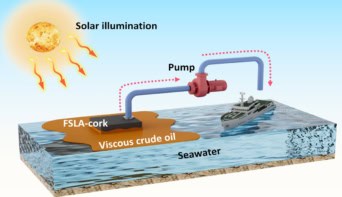
Smoke from biomass burning in south and central Africa brightens low-level clouds over the southeast Atlantic, cooling the climate. That’s according to researchers from the US and China who reported their work in PNAS.
“Our group is the first to quantify this brightening effect,” said Xiaohong Liu of the University of Wyoming, US. “This (smoke aerosols in clouds) reflects more solar radiation to space, which results in less solar radiation reaching the Earth’s surface. This creates a cooling effect.”
Previously scientists though that smoke diminishes the cooling from these clouds, by absorbing light that the clouds would otherwise reflect. But the team found that the smoke and cloud layers are closer together than expected so that aerosol particles from the smoke act as nuclei for cloud droplets to form around. These droplets are numerous but small and reflect more light than a collection of fewer, larger droplets.
In smoky conditions, the team found, there are almost twice as many cloud condensation nuclei per cubic centimetre. The result is a cooling effect that outcompetes the factors acting to reduce cooling by the clouds.
Since the Industrial Revolution, carbon dioxide from human activities has created a greenhouse effect of 1.66 W per square metre worldwide. During the fire season, smoke results in a cooling of 7 W per square metre over the southeast Atlantic.
The fire season in southern Africa runs from July to October. The fires, a mix of wildfires and fires set to clear farmland, create enough smoke to be visible on satellite images. The aerosols travel west over the southeast Atlantic Ocean, where they interact with the stratocumulus cloud beneath them, about 1 km above the sea.
Next the team would like to improve how global climate models account for clouds and interactions with aerosols from sources such as power plants, vehicles, deserts and oceans.
“Now that we know there are two competing mechanisms, and the seeding effect is winning, we can see whether climate models consider these processes properly when they predict the weather and climate in this area,” said Zhibo Zhang of UMBC, US.
In 2020 NASA is set to launch the PACE mission, which will be able to detect polarized light.
“With the new satellite you can look at things from different perspectives,” said Zhang. The plan is to develop three-dimensional models of the interactions between aerosols and clouds. “Hopefully we can look at this phenomenon even better.”



